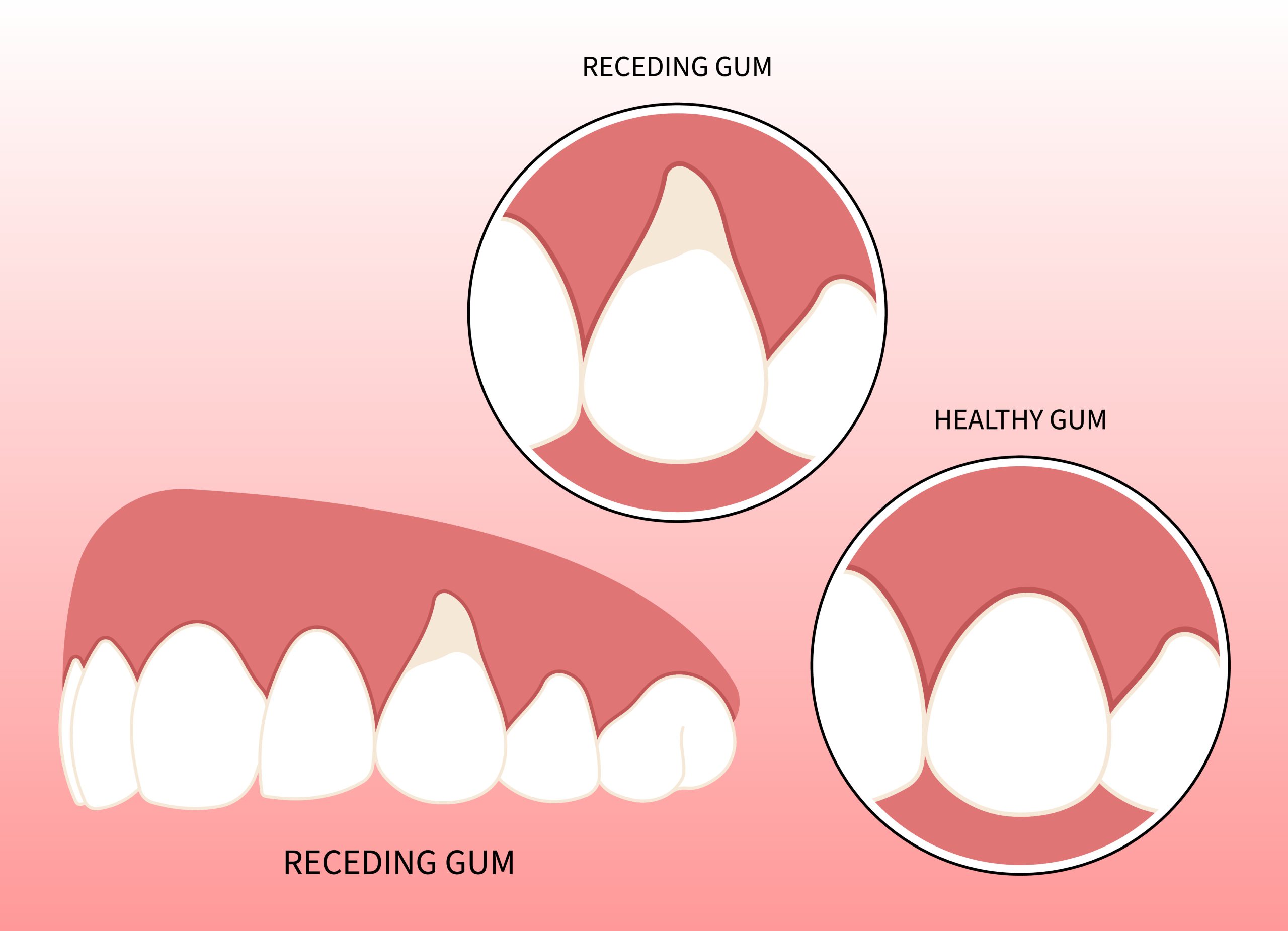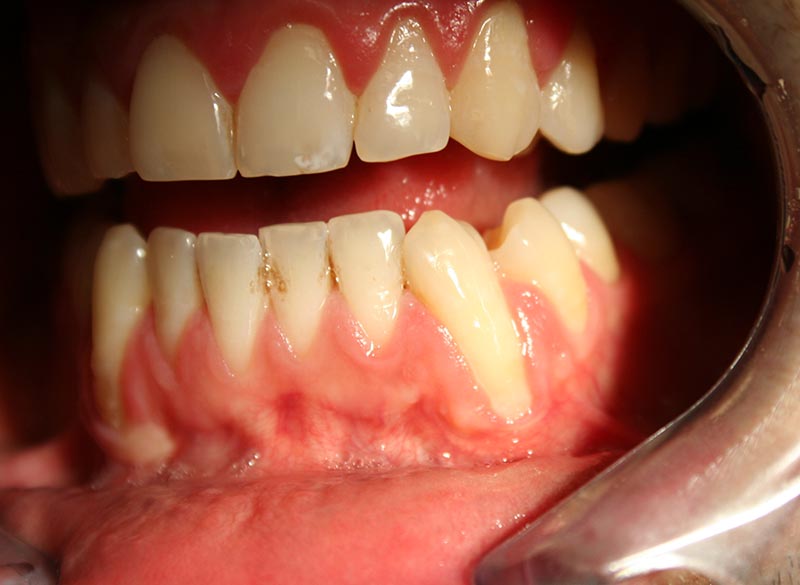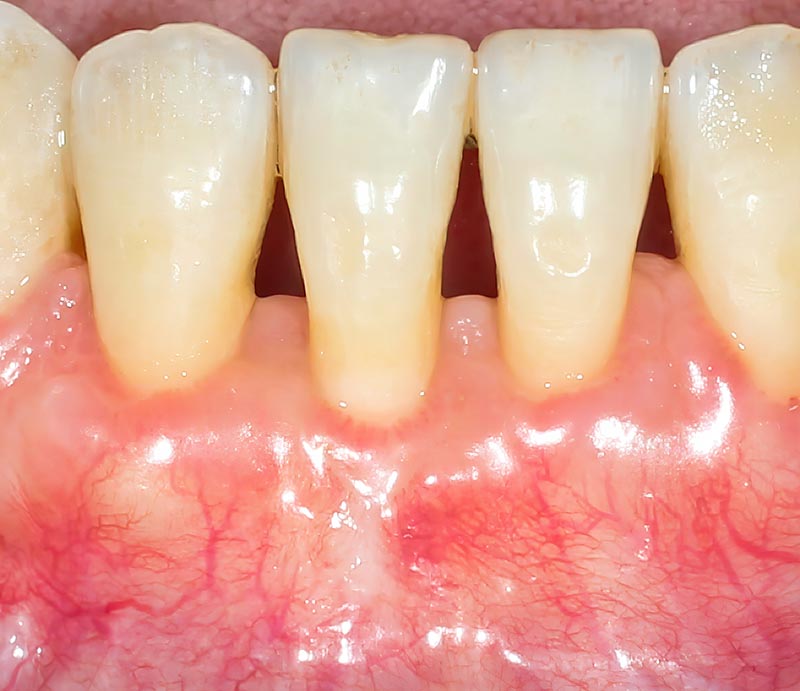
Connective Tissue Grafts for Receding Gums
Receding gums are a common dental concern that can affect both the health and appearance of your smile. While mild recession may not require intervention, advanced cases can expose the roots of your teeth, leading to sensitivity, increased risk of decay, and even tooth loss. One of the most effective treatments for advanced gum recession is the connective tissue graft—a procedure we perform regularly at Toronto North Periodontics to restore gum health and aesthetics.
In this blog, we’ll explain what receding gums are, when a connective tissue graft is recommended, how the procedure works, and why it’s considered the gold standard for root coverage.

What Are Receding Gums?
Your gingiva, or gums, play a critical role in protecting your teeth from trauma and bacterial invasion. When healthy, gum tissue fits snugly around each tooth like a turtleneck. However, due to factors like aggressive brushing, periodontal disease, or genetic predisposition, this tissue can begin to recede.
As recession progresses:
- The tooth root becomes exposed, leading to sensitivity to hot or cold foods
- Aesthetic concerns arise, as teeth appear longer or uneven
- The softer root surface is more vulnerable to decay than enamel
- Plaque accumulation increases, making oral hygiene more difficult
In its early stages, gum recession may not require surgical intervention. Atraumatic brushing and flossing can often halt further progression. But when the recession becomes advanced, protective gum tissue is lost and treatment like soft tissue grafting becomes necessary.
What Is a Connective Tissue Graft?
A connective tissue graft (CTG), also called a root coverage graft, is a type of soft tissue grafting procedure designed to treat gingival recession. It involves removing a thin layer of connective tissue from the roof of the mouth (palate) and placing it into a small pouch at the site of the recession.
This technique not only covers the exposed root but also increases the band of keratinized gingiva—the thick, protective gum tissue that helps resist further recession and trauma.
CTGs are typically performed for:
- Root coverage in esthetic areas (especially the front teeth)
- Reducing tooth sensitivity
- Improving plaque control and hygiene
- Preventing future recession around teeth and dental implants
When Is a Connective Tissue Graft Needed?
Your periodontist may recommend a CTG if:
- You have significant gum recession that exposes the root surface
- You are experiencing tooth sensitivity that doesn’t respond to desensitizing products
- You are preparing for restorative or orthodontic treatment and need more stable gum tissue
- You are unhappy with the appearance of your smile due to uneven gums
- You are at risk for further recession or bone loss
Dr. Valentin Dabuleanu will assess the severity of your gum recession using tools like the Miller classification system, which helps determine the likelihood of full root coverage based on the extent and type of tissue loss.
How the Procedure Works
A connective tissue graft is a minor surgical procedure typically performed under local anesthesia, though sedation options are available for anxious patients.
Step-by-Step Process:
- A small flap or pouch is created at the recipient site near the tooth with recession.
- A thin piece of connective tissue is harvested from the palate using a custom-shaped template.
- The graft is inserted into the pouch and carefully secured with sutures.
- The donor site is closed and sealed with sutures and, in some cases, an oral adhesive and dressing.
- A healing appliance may be provided to protect the palate and reduce discomfort.
The procedure typically takes about one hour. Most patients return to normal activities within two days. Full healing occurs over 4 to 6 weeks, with most of the initial recovery happening in the first two weeks.
You will be scheduled for follow-up visits at 1, 2, and 4 weeks to ensure proper healing and optimal results.
Benefits of Connective Tissue Grafting
A CTG offers several key advantages over other grafting methods (like free gingival grafts or allografts):
- Highly predictable root coverage—often complete in Class I and II recession cases
- Enhanced aesthetics—restores a natural gum contour and symmetry
- Improved comfort—reduces sensitivity to temperature and brushing
- Long-term protection—increased thickness of keratinized tissue reduces the risk of future recession
- Supports oral hygiene—makes brushing and flossing easier and more effective
When combined with proper brushing technique and regular dental care, the results are often permanent and highly aesthetic.
Advances in Connective Tissue Grafting
In some cases, we may enhance the graft’s success using wound healing modifiers such as enamel matrix protein (EMP). EMP (Straumann® Emdogain) promotes true periodontal regeneration by encouraging the reattachment of collagen fibers and bone along the root surface.
Combining EMP with a CTG may improve:
- The extent of root coverage
- The quality of healing
- The long-term stability of the results

Causes of Gum Recession
Understanding and addressing the root causes of gum recession is key to maintaining your graft long-term. Common causes include:
- Toothbrush trauma: Using a hard-bristle toothbrush or brushing too aggressively
- Improper flossing technique: Can cause injury at the gum margin
- Periodontal disease: Bacterial infection that damages the attachment tissues
- Occlusal habits: Grinding, clenching, or an imbalanced bite
- Oral piercings: Constant trauma from jewelry against gum tissue
- Orthodontic movement: In thin biotypes, movement of teeth can trigger recession
Patients are educated on gentle brushing, proper flossing, and lifestyle modifications after the procedure to preserve their results.
Who Is a Good Candidate?
Ideal candidates for a connective tissue graft are:
- In good general and oral health
- Non-smokers or willing to quit, as smoking interferes with healing
- Able to commit to excellent oral hygiene
- Motivated to follow post-operative instructions and maintain follow-up care
Rebuild Your Gum Health at Toronto North Periodontics
Gum recession can compromise both the health and appearance of your smile. A connective tissue graft offers a proven, long-lasting solution that restores natural contours, reduces sensitivity, and protects against future damage.
At Toronto North Periodontics, Dr. Valentin Dabuleanu combines surgical expertise with the latest techniques in soft tissue grafting to deliver results that are both functional and aesthetic.
Contact us today to schedule a consultation and find out if a connective tissue graft is the right solution for your receding gums. Let us help you protect your smile—for life.

